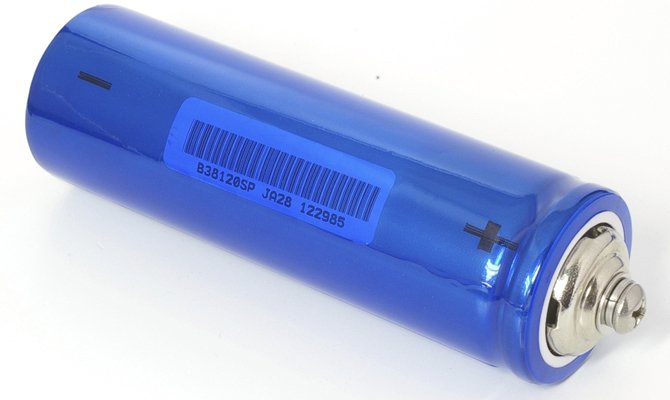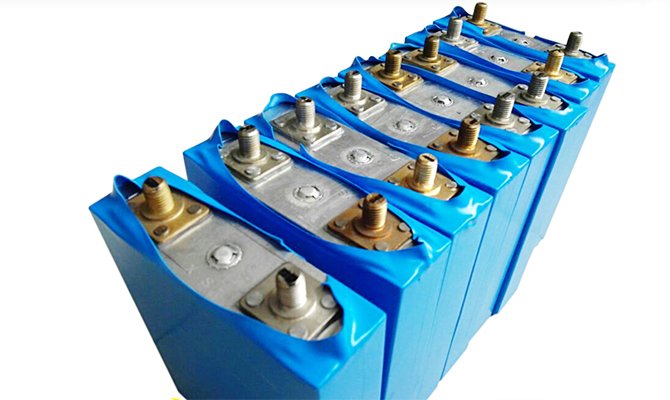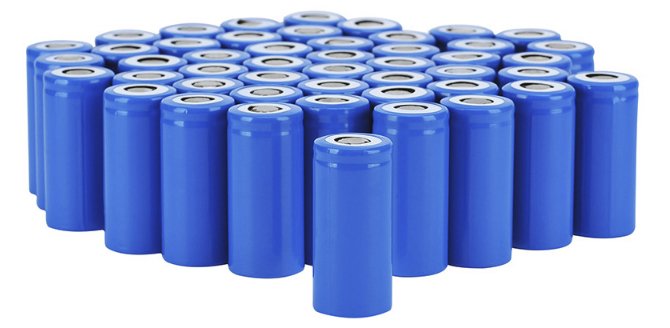The modern market is replete with a variety of electronic equipment. For their functioning, more and more advanced power sources are being developed. Among them, a special place is occupied by lithium iron phosphate batteries. They are safe, have large electrical capacities, practically do not emit toxins, and are durable. Perhaps soon these batteries will be forced out of the devices of their "brothers."
Content
- What is lithium iron phosphate battery
- How is the production of LiFePo4 batteries
- The principle of operation and the device lithium iron phosphate battery
- Specifications LiFePo4 batteries
- What are LiFePo4 batteries
- Lithium Iron Phosphate Battery: Pros and Cons
- Chargers and how to charge LiFePo4
- Where are LiFePo4 batteries used?
- Rules for storage, operation and disposal of LiFePo4
What is lithium iron phosphate battery
LiFePo4 batteries are high quality and reliable power supplies with high performance. They actively displace not only obsolete lead-acid, but also modern Li-ion batteries. Today, battery data is found not only in industrial equipment, but also in household devices - from smartphones to electric bicycles.
LFP batteries were developed by the Massachusetts University of Technology in 2003. Their basis is an improved Li-ion technology with a modified chemical composition: lithium ferrophosphate is used for the anode instead of lithium cobaltate. The battery is widely distributed thanks to companies such as Motorola and Qualcomm.
How is the production of LiFePo4 batteries
The main components for the manufacture of LiFePo4 batteries are supplied to the factory in the form of a dark gray powder with a metallic sheen. The production scheme of the anodes and cathodes is the same, but due to the inadmissibility of mixing the components, all technological operations are carried out at different workshops. All production is divided into several stages.
First step. Creation of electrodes. To do this, the finished chemical composition is coated on both sides with a metal foil (usually aluminum for the cathode, and copper for the anode). The foil is pre-treated with a suspension so that it can act as a current receiver and a conductive element. Finished elements are cut into thin strips and folded several times, forming square cells.
Second step. Directly battery assembly. Cell-shaped cathodes and anodes are placed on both sides of the separator of porous material, tightly fixed to it. The resulting block is placed in a plastic container, filled with electrolyte and sealed.
The final stage. Battery charge / discharge test. Charging produces a gradual increase in voltage so that there is no explosion or ignition due to the release of a large amount of heat. To discharge, the battery is connected to a powerful consumer. Without detecting deviations, finished items are sent to the customer.
The principle of operation and the device lithium iron phosphate battery
LFP batteries consist of electrodes pressed tightly against the porous separator on both sides. To power the devices, both the cathode and the anode are connected to current collectors. All components are placed in a plastic case, filled with electrolyte. A controller is placed on the case, which regulates the current supply during charging.
The principle of operation of LiFePo4 batteries is based on the interaction of lithium ferrophosphate and carbon. The reaction itself proceeds according to the formula:
LiFePO4 + 6C → Li1-xFepo4 + LiC6
The charge carrier of the battery is a positively charged lithium ion. It has the ability to penetrate into the crystal lattice of other materials, with the formation of chemical bonds.
Specifications LiFePo4 batteries
Regardless of the manufacturer, all LFP cells have the same specifications:
- peak voltage - 3.65 V;
- voltage at the midpoint - 3.3 V;
- voltage in a fully discharged state - 2.0 V;
- rated operating voltage - 3.0-3.3 V;
- minimum voltage under load - 2.8 V;
- durability - from 2 to 7 thousand charge / discharge cycles;
- self-loading at a temperature of 15-18 Cabout - up to 5% per year.
The technical specifications presented relate specifically to LiFePo4 cells. Depending on how many of them are combined by one battery, the parameters of the batteries will vary.
Instances of domestic production have the following characteristics:
- capacity - up to 2000 Ah;
- voltage - 12 v, 24v, 36v and 48v;
- with a range of operating temperatures - from -30 to +60 Cabout;
- with a charge current - from 4 to 30A.
All batteries do not lose their quality during storage for 15 years, have a stable voltage and are characterized by low toxicity.
What are LiFePo4 batteries
Unlike our usual batteries, which are marked with the symbols AA or AAA, lithium iron phosphate cells have a completely different marking of the form factor - their sizes are encrypted with a 5-digit number. All of them are presented in the table.
| Size | Dimensions, DxL (mm) |
|---|---|
| 14430 | 14 x 43 |
| 14505 | 14 x 50 |
| 17335 | 17 x 33 |
| 18500 | 18 x 50 |
| 18650 | 18 x 65 |
| 26650 | 26 x 65 |
| 32600 | 32 x 60 |
| 32900 | 32 x 90 |
| 38120 | 38 x 120 |
| 40160 | 40 x 160 |
| 42120 | 42 x 120 |
Even without a table with a marking in front of you, you can easily navigate the dimensions of the battery. The first two digits of the code indicate the diameter, the rest indicate the length of the power source (mm). The number 5 at the end of some sizes corresponds to half a millimeter.
Lithium Iron Phosphate Battery: Pros and Cons
LFP batteries are based on Li-ion technology, which allowed them to incorporate all the advantages of these power sources, and at the same time get rid of their inherent disadvantages.
Among the main advantages are:
- Durability - up to 7,000 cycles.
- High charge current, which reduces energy replenishment time.
- Stable operating voltage, which does not drop until the charge is completely exhausted.
- High peak voltage - 3.65 Volts.
- High rated capacity.
- Light weight - up to several kilograms.
- Low environmental pollution during disposal.
- Frost resistance - work is possible at a temperature from -30 to + 60Cabout.
But the batteries also have disadvantages. The first of these is high cost. The price of an element for 20 Ah can reach 35 thousand rubles. The second and last drawback is the difficulty of assembling a battery can yourself, unlike lithium-ion cells. Other obvious minuses in these power sources have not yet been identified.
Chargers and how to charge LiFePo4
Chargers for LiFePo4 batteries are practically no different from conventional inverters. In particular, it is possible to record a large current strength at the output - up to 30A, which is used to quickly charge cells.
When buying a ready-made battery pack, difficulties with their charging should not arise. In their design, electronic control is integrated, which protects all cells from a complete discharge and supersaturation of electricity. Expensive systems use a balancing board that evenly distributes energy between all cells of the device.
When recharging, it is important not to exceed the recommended amperage if you use third-party chargers. This will reduce battery life by several times in a single charge. If the battery heats up or swells, then the amperage exceeds the permissible values.
Where are LiFePo4 batteries used?
LFP batteries are of great importance to the industry. They are used to maintain the operability of devices at weather stations and hospitals. They are also implemented as a buffer in wind farms and used to accumulate energy from solar panels.
12v batteries begin to be used in modern cars instead of the usual lead-acid elements.LiFePo4 designs are installed as the main power source for electric bicycles and ATVs, motor boats.
Widely their importance in everyday life. They are built into phones, tablets, and even screwdrivers. However, such devices differ significantly in price from their less technological counterparts. Therefore, meeting them on the market is still difficult.
Rules for storage, operation and disposal of LiFePo4
Before sending the LFP battery for long-term storage, it is necessary to charge it up to 40-60% and maintain this charge level throughout the entire period of conservation. Keep the battery in a dry place where the temperature does not drop below room temperature.
During operation, the manufacturer's requirements must be followed. It is important not to overheat the battery. If you notice that the battery heats up unevenly during operation or recharging, then you should contact the repair center - perhaps one of the cells has failed, or there are malfunctions of the control unit or the balancing board. The same should be done when blisters appear.
For proper disposal of a battery that has fully exhausted its life, you should contact a company specializing in this. So you will not only act as a conscious citizen, but you will also be able to make money on it. However, if you just send the battery to a landfill, then nothing bad will happen.











